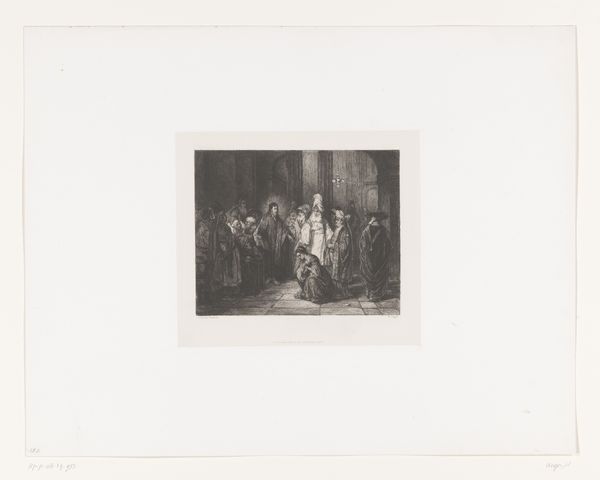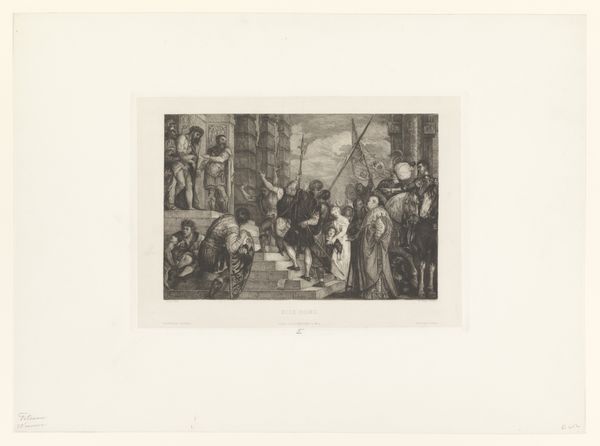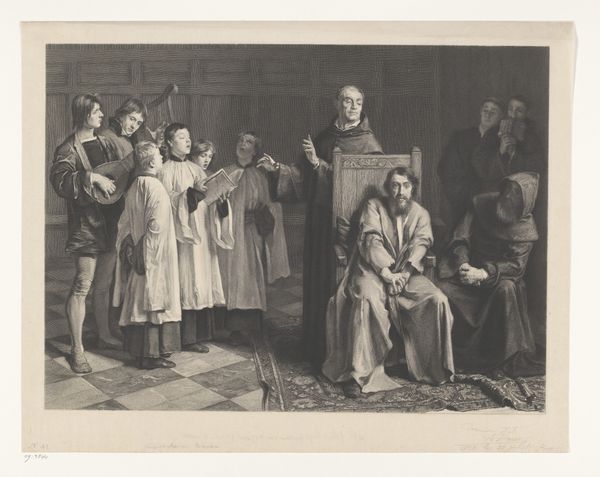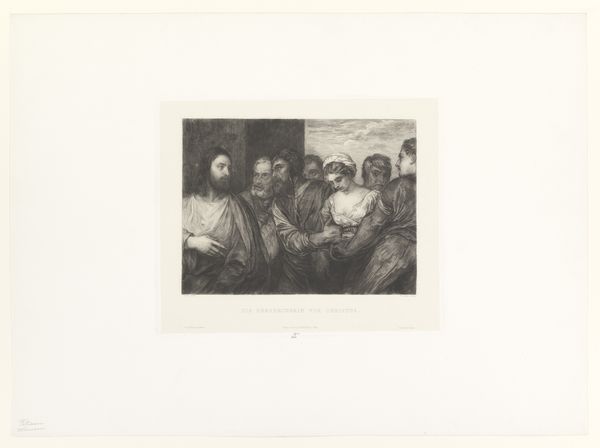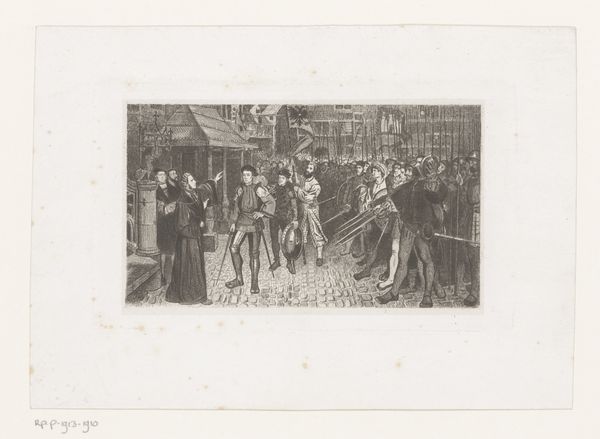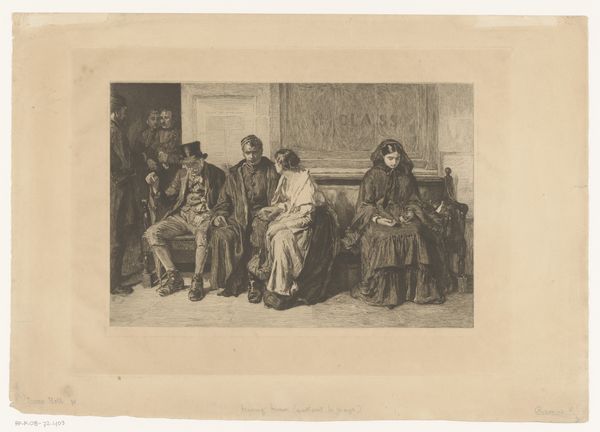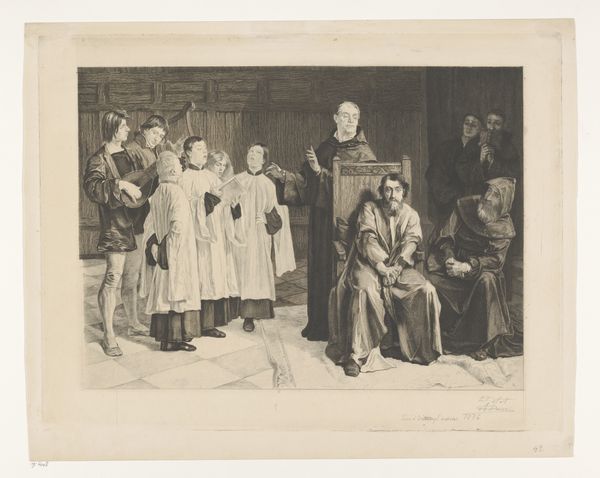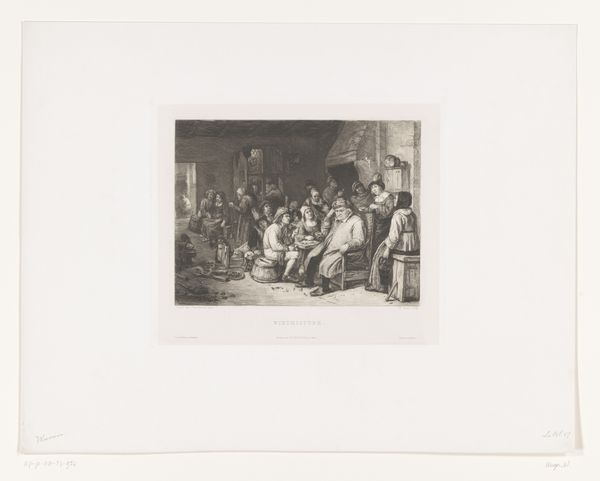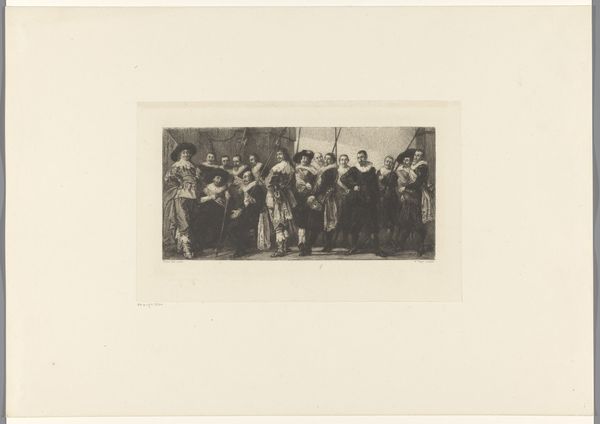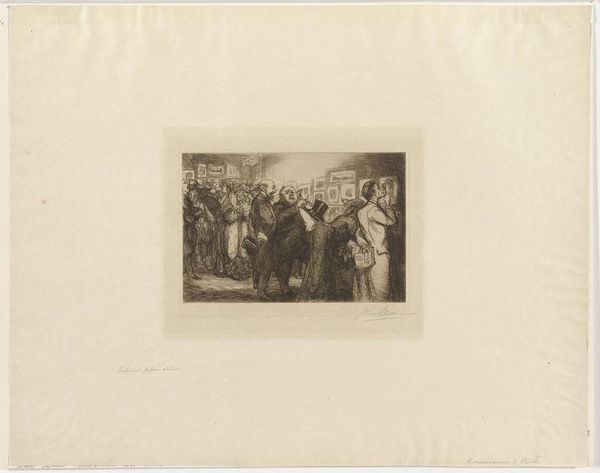
Dimensions: height 199 mm, width 298 mm
Copyright: Rijks Museum: Open Domain
Curator: Let’s turn our attention to "Franciscus Junius predikt heimelijk de hervorming in Antwerpen," a historical engraving made by Léopold Flameng in 1860. Editor: It has such a somber, concentrated atmosphere. The tight gathering of figures creates an enclosed visual space—it is almost claustrophobic. All rendered in striking monochrome. Curator: Flameng’s print illustrates a clandestine moment of religious reform in Antwerp. Notice how he frames the scene within the architecture. This covert gathering, it suggests, is happening within the edifice of a larger society. Editor: Absolutely, and see how the light source emphasizes Junius. This illumination draws our eye directly to him, highlighting his importance and positioning him as a figure of knowledge and almost spiritual authority within this cramped, furtive space. Curator: Precisely. Consider how prints like this circulated widely. Flameng’s detailed rendering, typical of academic art, would have brought this moment of defiance, this early move towards religious independence, into the homes of a burgeoning middle class invested in narratives of national and religious identity. Editor: The composition reinforces this notion. The close grouping isn't just for mood. It strengthens the emotional link to Junius, and therefore, to his ideas. It becomes less about any grand gesture, and more about intimate dissemination and creating bonds. Curator: Indeed, it humanizes a moment of significant political and religious upheaval, bringing it to a relatable, human level for contemporary audiences, especially those sympathetic to liberal and nationalistic causes in the 19th century. Editor: And Flameng’s handling of light isn't just for drama. See the etching's contrasting tones, they are cleverly distributed, allowing viewers to interpret the scene, guiding them but letting them fill in the blanks and encouraging active engagement. Curator: It really does showcase the potent role art plays in shaping our understanding of the past. This is a fascinating study of both religious defiance and the art of political image-making during this period of shifting social and political forces. Editor: Yes, it is more than a reproduction. Through meticulous detail and dramatic play of light, it really encapsulates a vital piece of history.
Comments
No comments
Be the first to comment and join the conversation on the ultimate creative platform.

